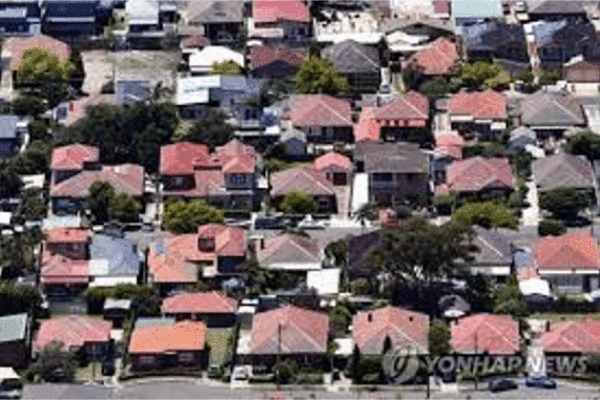CSIRO 보고서는 원자력 에너지가 재생 에너지보다 더 비싸다고 밝혔습니다.
비즈니스 기자 Gareth Hutchens 작성
6시간 전6시간 전에 게시됨
VIMEOGenCost 보고서 초안에서는 가변 재생 에너지가 모든 기술 중 가장 낮은 비용 범위에 직면해 있다고 말합니다.
링크 복사링크 복사됨
기사 공유
CSIRO와 에너지 시장 규제 기관의 보고서에 따르면 원자력은 호주에서 가장 비용이 많이 드는 새로운 에너지원이 될 것이라고 추정했습니다.
키 포인트:
태양광 및 육상 풍력 프로젝트는 호주에서 가장 저렴한 신에너지 형태입니다.
원자력은 가장 비싼 신에너지원이 될 것이다
CSIRO의 GenCost 보고서 초안은 2024년 2월까지 협의를 위해 공개됩니다.
보고서는 시간이 지남에 따라 전력망을 시스템에 더 큰 비율로 통합하면서 전력망을 안정적으로 유지하는 데 드는 비용을 고려하더라도 태양광 및 육상 풍력 프로젝트에서 생성된 전기가 호주에서 가장 저렴하다고 밝혔습니다.
결과는 협의를 위해 목요일에 발표된 GenCost 2023-24 보고서 초안에서 확인할 수 있습니다.
CSIRO 수석 에너지 경제학자이자 보고서의 주요 저자인 Paul Graham은 원자력 비용 추정치가 지난 달 중단된 미국 원자력 프로젝트의 실제 경험을 기반으로 하기 때문에 중요하다고 말했습니다.
다양한 기술의 비용
GenCost 보고서는 CSIRO와 AEMO(호주 에너지 시장 운영자)에 의해 매년 발행됩니다.
이는 2050년까지 새로운 발전 및 저장 프로젝트를 구축하는 데 드는 예상 비용에 대한 연간 업데이트를 제공합니다.
에너지장관 “원전 너무 비싸다”
연방정부는 원자력을 호주의 미래 에너지 믹스의 일부로 고려하라는 야당의 점점 커지는 요구를 막기 위해 수치를 공개했습니다.
기자회견에서 호주 국기 앞에서 해군 양복과 넥타이를 매고 있는 크리스 보웬
더 읽어보세요
이는 석탄, 가스, 태양광, 풍력, 원자력, 바이오에너지, 수소 전해조 및 양수 및 배터리와 같은 저장 장치에서 생산되는 전기 비용의 변화를 추정합니다.
보고서 초안은 2024년 2월 9일까지 협의를 위해 공개되며, 2023~24년 최종 보고서는 내년 2분기에 공개될 예정이다.
이 초안 보고서에 따르면, 가변 재생 에너지(예: 태양광 PV 및 풍력 기술)는 현재와 2030년 모두 호주의 신축 기술 중 비용 범위가 가장 낮습니다.
아래 그래프는 2023년 예상 비용을 보여줍니다.
2023년에 가장 비싼 전력은 이론적인 소형 모듈형 원자로(SMR)에서 나올 것이며, 두 번째로 비싼 전력은 수소로 가동되는 피크 발전소에서 나올 것입니다.
균등화 된 전기 비용
원자력에 관한 그 점은 중요합니다.
CSIRO의 과학자들은 최근까지 호주에서 원자력 사용의 잠재적 비용에 대한 논의는 이론적으로만 남아 있었으며 완료된 상업 프로젝트의 데이터가 부족하여 가치 있는 계산을 시도하는 데 방해가 되었다고 말합니다.
그러나 최근 미국에서 중단된 핵 SMR 프로젝트 개발 시도가 이 문제에 대한 귀중한 데이터를 제공했다고 밝혔습니다.
GenCost는 이해관계자들로부터 SMR이 호주에 적합한 규모의 원자력 기술이라는 조언을 받았다고 말합니다.
글로벌 인플레이션 압력으로 인해 대부분의 기술 자본 비용이 2022년에 20% 증가했지만 미국의 원자력 SMR 프로젝트 비용은 약 70% 증가했으며 이로 인해 올해 11월 프로젝트가 취소되었습니다.
이전 GenCost 보고서에는 실제 비용 데이터가 포함되지 않았으며 결과적으로 이 보고서의 원자력 SMR에 대한 현재 자본 비용은 미국 프로젝트의 경험과 일치하도록 “상당히 증가”되었습니다.
보고서는 “이 프로젝트의 취소는 미국에서 원자력규제위원회로부터 설계 인증을 받은 유일한 SMR 프로젝트였기 때문에 의미가 크다”며 “이는 건설 시작 전 필수 단계”라고 지적했다.
재생에너지의 ‘통합 비용’
올해의 GenCost 보고서 초안은 다양한 재생 가능 기술에 대한 예상 “통합 비용”에 대한 추가 데이터도 제공합니다.
재생 에너지와 같은 대부분의 신축 기술은 이미 배치된 기존 용량에 의존하여 전력 시스템에 진입하고 안정적인 전력을 제공할 수 있지만, 점유율이 증가하여 기존의 유연한 용량이 폐기됨에 따라 시스템이 점점 더 어려워질 것이라고 말합니다. 추가 투자 없이 안정적인 전원공급을 제공합니다.
이 문제를 해결하기 위해 보고서는 가변 재생 에너지를 시스템의 60, 70, 80 및 90% 비율로 신뢰할 수 있게 만드는 데 드는 추가 비용을 계산합니다(추가 “통합 비용”은 주로 새로운 저장 및 전송 비용으로 구성됨).
보고서는 이러한 통합 비용을 고려하더라도 가변 재생 에너지의 비용 범위가 2023년과 2030년에 여전히 모든 신축 기술 중 가장 낮다는 것을 발견했습니다.
아래 그래프는 2023년의 다양한 시나리오에 대한 결과를 강조합니다.
가변 비용
재생 에너지 시나리오의 경우
Graham 씨는 우리가 배출량을 줄이고 싶지 않다면 새로운 석탄 및 가스 발전소의 비용은 재생 에너지 건설 비용보다 약간 높을 뿐이라고 말합니다.
그러나 우리는 호주에서 순 제로 배출 목표를 가지고 있기 때문에 “실제로 배출 감소가 수반되기 때문에 재생 가능 에너지를 구축하는 것이 좋을 것입니다. 반면 새로운 석탄과 가스는 더 높은 배출로 이어질 것입니다.”라고 그는 RN Breakfast에 말했습니다.
“지난 주에 통합 시스템 계획이 발표되었으며, 비록 이것이 재생 가능한 미래가 될 가능성이 있지만 지원 기술로서 여전히 가스가 필요할 것이라는 점을 강조했습니다.
“이것은 재생 에너지 주변의 격차를 메울 수 있는 좋은 기술일 뿐만 아니라 전력을 여전히 안정적으로 유지하기 위한 저장 및 기타 방법입니다.”라고 그는 말했습니다.
6시간 전 게시됨
Nuclear energy is more expensive than renewables, CSIRO report finds
By business reporter Gareth Hutchens
Posted 6h ago6 hours ago
https://player.vimeo.com/video/896412073?app_id=122963VIMEOThe draft GenCost report says variable renewables face the lowest cost range of any technology.
abc.net.au/news/nuclear-energy-most-expensive-csiro-gencost-report-draft/103253678Copy link
Link copiedShare article
Nuclear power would be the most expensive source of new energy for Australia, a report from the CSIRO and energy market regulator has estimated.
Key points:
- Solar and on-shore wind projects are the cheapest form of new energy in Australia
- Nuclear energy would be the most expensive source of new energy
- The CSIRO’s draft GenCost report is open for consultation until February 2024
The report says electricity generated by solar and on-shore wind projects is the cheapest for Australia, even when accounting for the costs of keeping the power grid reliable while they’re integrated into the system in greater proportions over time.
The results can be found in the GenCost 2023-24 draft report, released on Thursday for consultation.
Paul Graham, CSIRO chief energy economist and lead author of the report, says the estimates of the costs of nuclear energy are significant, because they’re based on the actual experience of a nuclear energy project in the United States that was aborted last month.
The costs of different technologies
The GenCost report is published every year by the CSIRO and AEMO (the Australian Energy Market Operator).
It provides an annual update on the estimated costs of building new electricity generation and storage projects up to 2050.
Energy Minister says nuclear power too expensive
It estimates the changing costs of electricity produced by coal, gas, solar, wind, nuclear, bioenergy, hydrogen electrolysers, and storage such as pumped hydro and batteries.
The draft report will be open for consultation until February 9, 2024, and the final 2023-24 report will be released in the second quarter of next year.
According to this draft report, variable renewables (such as solar PV and wind technologies) have the lowest cost range of any new-build technology in Australia, both now and in 2030.
The graph below shows estimated costs for 2023.
The most expensive power in 2023 would come from a theoretical small modular nuclear reactor (SMR), and the second-most expensive would come from a peaking plant run on hydrogen.
That point about nuclear energy is significant.
CSIRO’s scientists say until recently, discussions about the potential cost of using nuclear energy in Australia have remained theoretical, with a lack of data from completed commercial projects hindering attempts to make worthwhile calculations.
However, it says a recently-aborted attempt in the US to develop a nuclear SMR project provided valuable data on this question.
It says GenCost has been advised by stakeholders that SMRs are the appropriate size nuclear technology for Australia.
It says global inflationary pressures saw most technology capital costs increase by 20 per cent in 2022, but the costs for the nuclear SMR project in the US increased by roughly 70 per cent, which contributed to the project being cancelled in November this year.
It says that real-life cost data had not been included in previous GenCost reports, and as a consequence, current capital costs for nuclear SMR in this report have been “significantly increased” to bring them into line with the experience of that US project.
“The cancellation of this project is significant because it was the only SMR project in the US that had received design certification from the Nuclear Regulatory Commission, which is an essential step before construction can commence,” the report notes.
The ‘integration costs’ of renewables
This year’s draft GenCost report also provides more data on the estimated “integration costs” for variable renewable technologies.
It says most new-build technologies, like renewables, can enter an electricity system and provide reliable power by relying on existing capacity already deployed, but as their share increases, which forces the retirement of existing flexible capacity, the system will find it increasingly difficult to provide reliable power supply without additional investment.
To address that issue, the report calculates the additional cost of making variable renewables reliable at shares of 60, 70, 80, and 90 per cent of the system (the extra “integration costs” consist mainly of new storage and transmission costs).
The report found even when those integration costs were taken into account, the cost range for variable renewables was still the lowest of all new-build technologies in 2023 and 2030.
The graph below highlights the results for those different scenarios 2023.
Mr Graham says if we didn’t want to reduce emissions the cost of new coal and gas plants would only be slightly higher than the cost of building renewables.
However, since we have a net zero emission goal in Australia, “we might as well build renewables because that actually comes with emission reductions, whereas new coal and gas will lead to higher emissions,” he told RN Breakfast.
“Mind you, the integrated system plan was released last week and it did emphasise that although it is likely to be a renewable future, we’ll still need gas as a supporting technology.
“It’s a good technology for filling in the gaps around renewables, as well as storage and other methods for making sure that power’s still reliable,” he said.
Posted 6h ago











